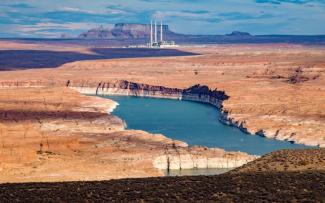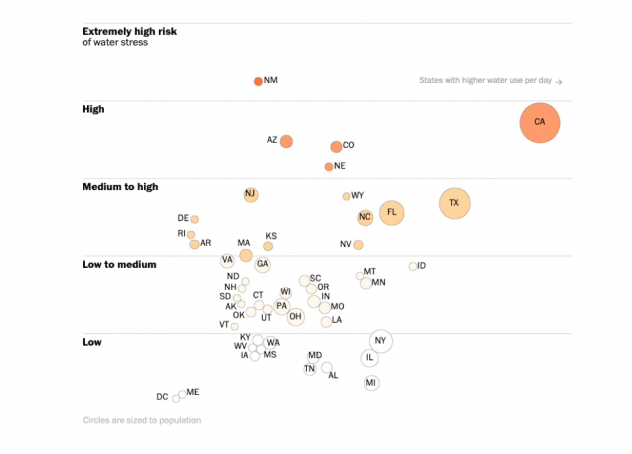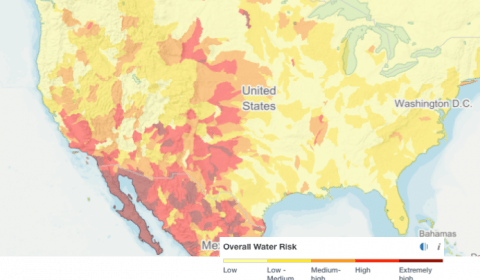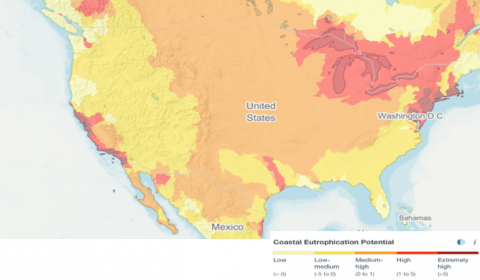From Water Stress to Water Scarcity


We are rolling drunk on the planet’s most important resource- water. Water scarcity is a global issue, which means we have problems in our own backyard. The United States appears as a country with little or no water scarcity to the rest of the world. While it may be difficult for someone who grew up in the United States to put oneself in the shoes of an African or Southeast Asian child, the water stress in the country is real. “Water stress” represents how close a country or a region is to draining its water supplies. Also, with increase in forest fires and anthropogenic activities, the water quality has been degrading leading to public health concerns. It seems impossible that a powerful waterbody like Colorado river is drying in places. The water level is dramatically dropping in Lake Powell and Lake Mead in Arizona, reflecting on the reduced water levels in Colorado river[1]. Some researchers also claim that Lake Mead, which currently supplies water to 22 million people, may be dry by 2021. Generous shower heads, aging and leaking infrastructure and wasteful toilets are contributing beyond imagination to the US water stress.
Water scarcity is an issue of the near future that needs immediate attention as it applies to the United States. A recent tool released by the World Resources Institute indicates that the United States along with many other countries is going to face a water risk sooner rather than later. The Water Risk Atlas indicates a high regional water stress and a high level of nutrient runoff issues in the finger lakes region and other coasts. A handful of US states including California and New Mexico are facing significant strain on their water supplies as the global temperature rises. Some other states likeFlorida have “too much” water and are flood prone making safe water inaccessible. According to the Atlas that analyzed 50 years of data from 189 countries, US is placed at 71st with a low to medium water stress. What is alarming is that within the country, the withdrawal and replenishment of water varies significantly in various regions leading to a supply-demand mismatch. Figure 1. Shows water risks for various cities in the US.

The water withdrawn in the United States is still less than 20% of the overall water supplies. However, the water resources are withdrawn at a faster rate than they are replenished. Additional factors like global warming and mismanagement are also contributing to the overall water stress. Figure 2 shows the overall water stress and Southwestern states are in the riskiest position because they are naturally arid. For instance, New Mexico’s water demand draws more than 80% of the supply leaving a small margin of water stock.
Even though it appears that Northeastern states do not have a significant water risk, this is primarily because all the factors such as water depletion, inter annual variability, riverine and coastal flood risks, groundwater table depletion and other physical risk factors are averaged in Figure 2. However, it is very important to note that these states along with California are suffering from specific issues, for example, coastal eutrophication due to agricultural activities as shown in Figure 3.

While all the data and statistics are alarming, we all need to look on the positive side and be proactive. Sustainable water management that is key to improving water infrastructure must be a priority, as water conservation and efficiency are key components of sustainable water management. Rainwater harvesting and wastewater recycling also reduce the pressure on groundwater and freshwater resources. The water managers must understand the factors that contribute to water risk including climate change, faulty infrastructure, pollution and mismanagement. Most importantly, education to make consumers understand where their water comes from, what are the measures to save it and how to use it responsibly is the key in fighting problems related to future water scarcity.
[1] https://www.denverpost.com/2018/09/03/lake-mead-lake-powell-drought-colorado-river/

